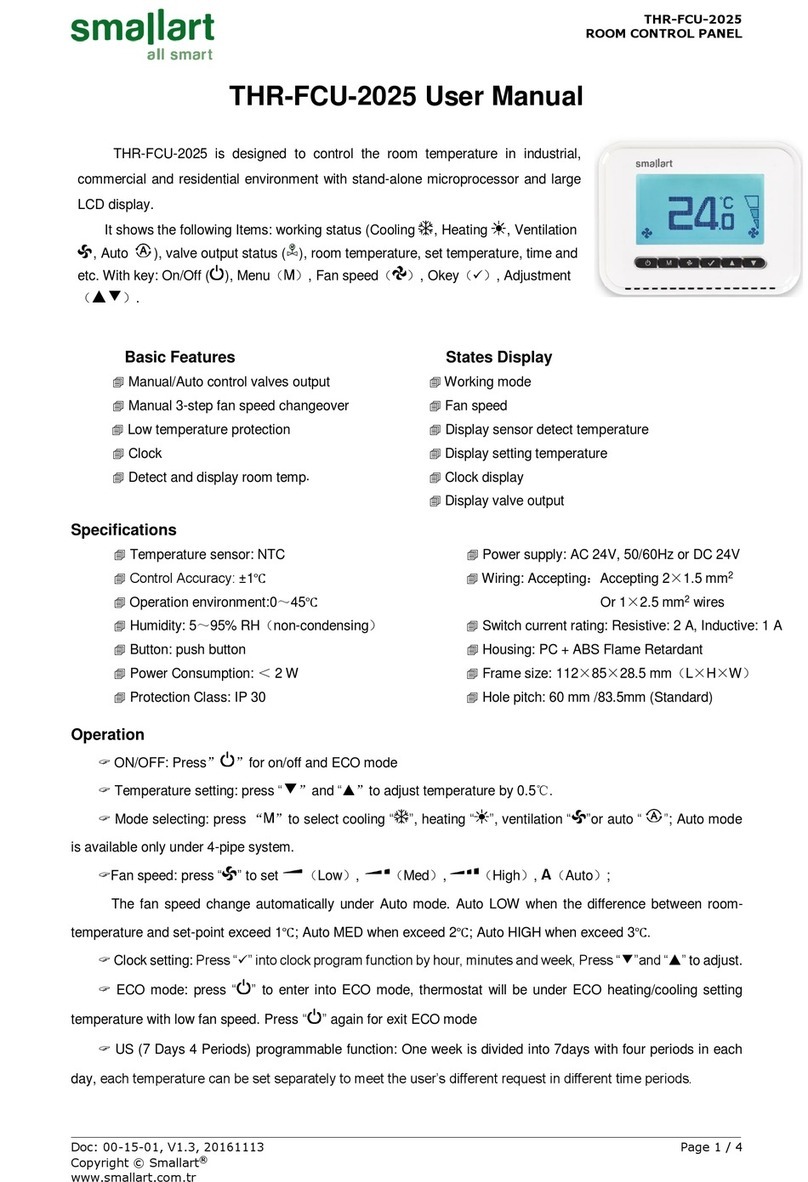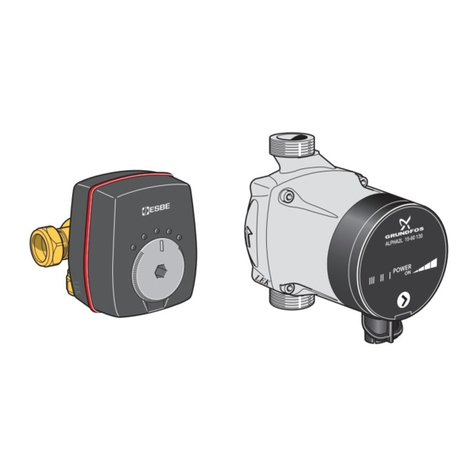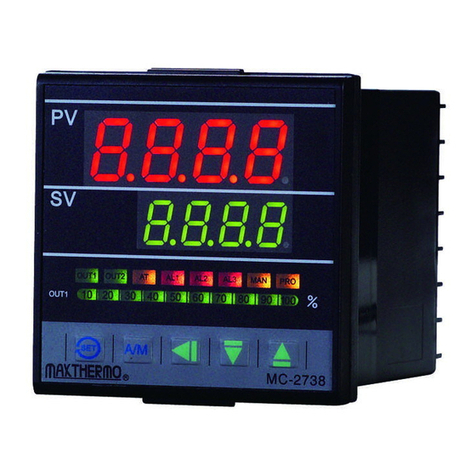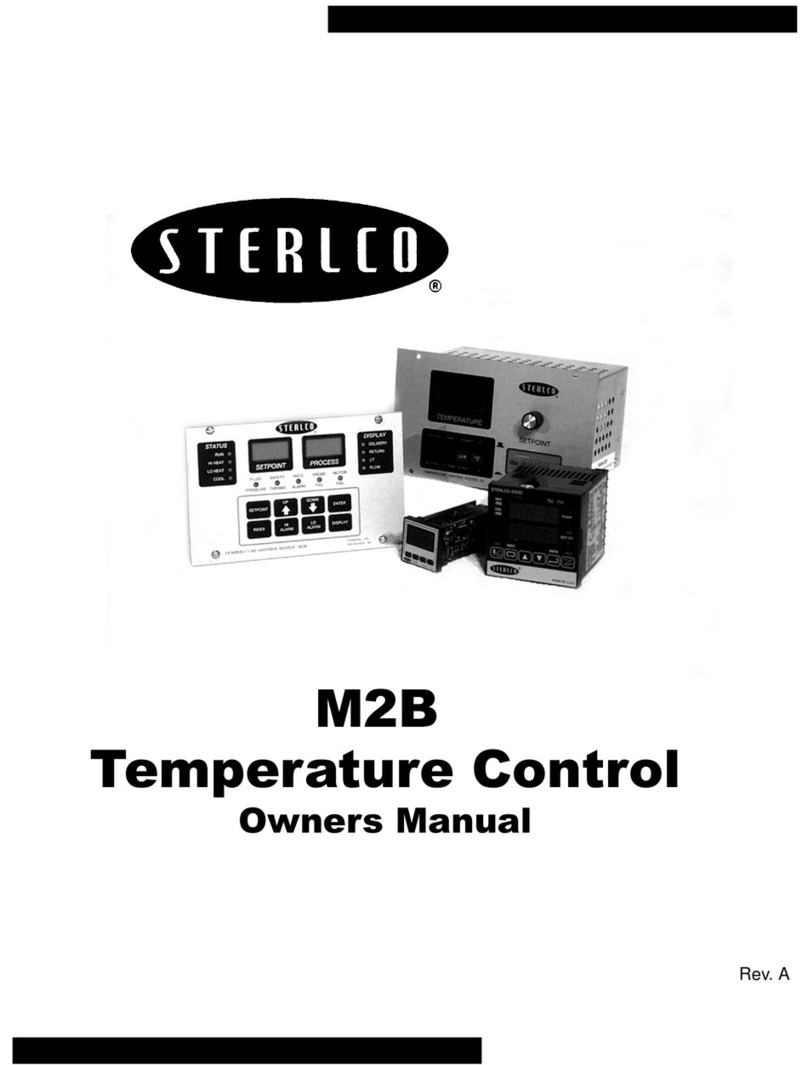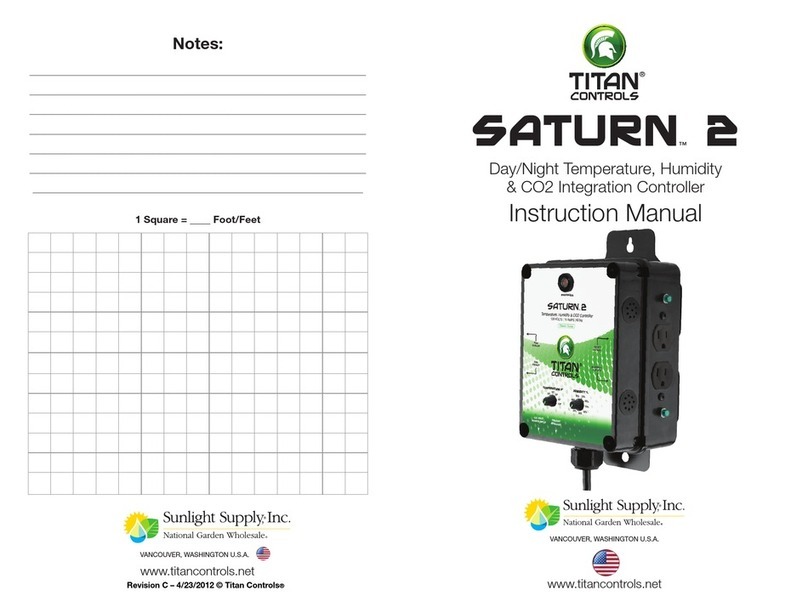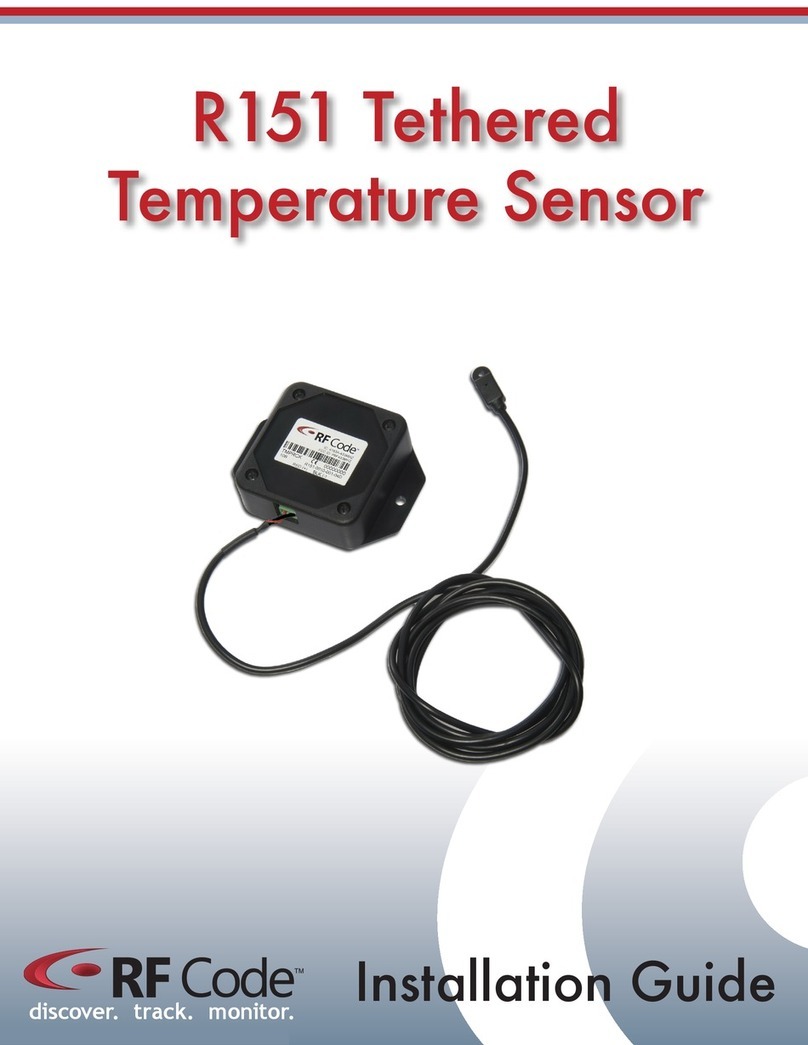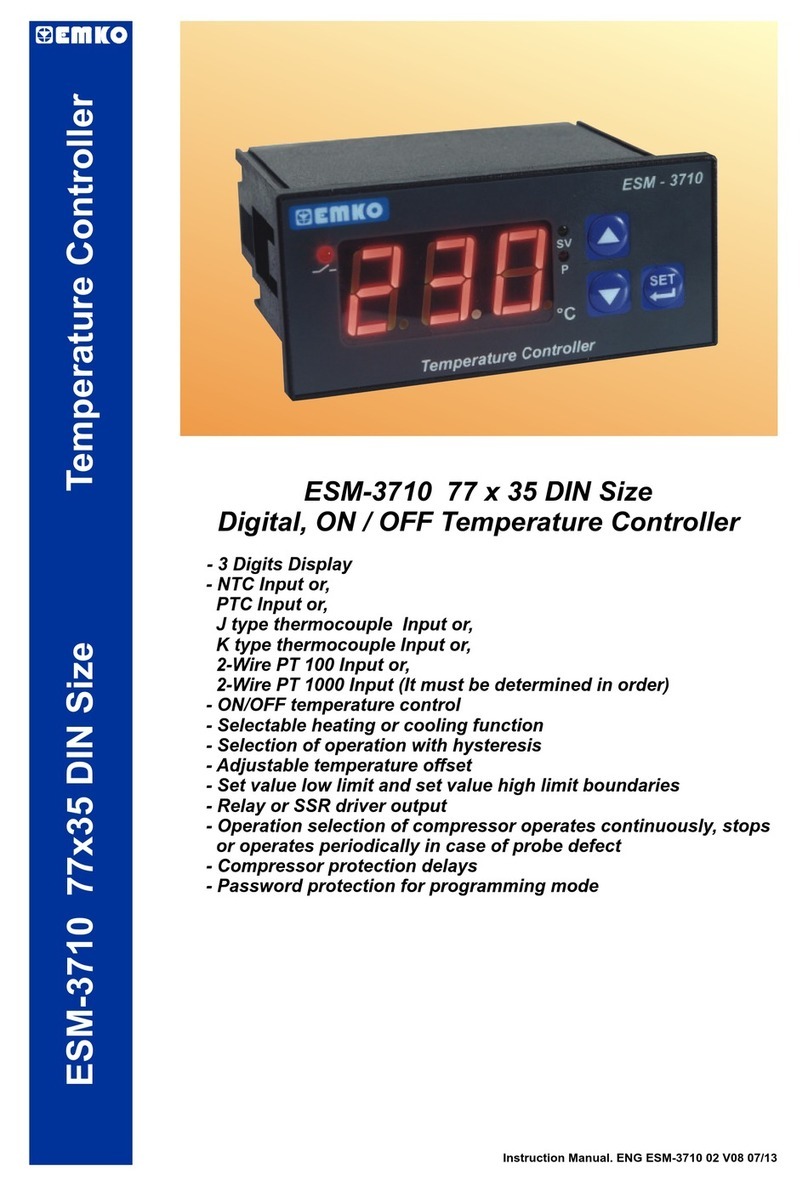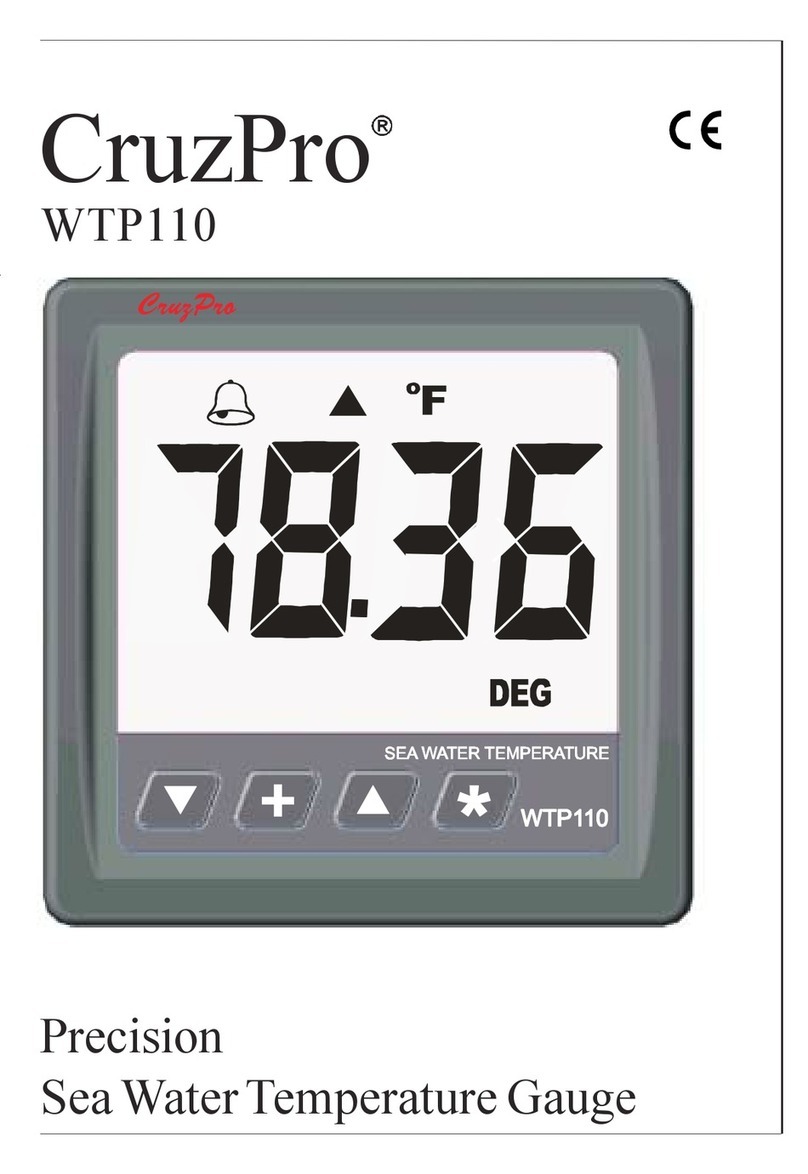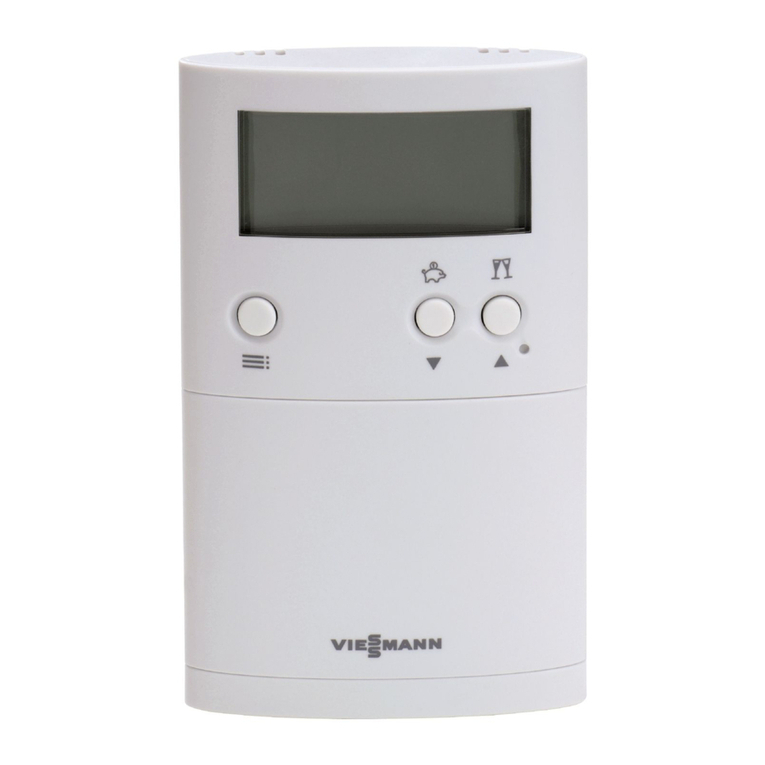Uponor c56 User manual

01 | 2009
INDOOR CLIMATE
UPONOR
CONTROL SYSTEM
Uponor Control System –
Installation and Operation
Manual

Installation and operation manual
Quick start guide ..............................................................3
Preface ...............................................................................6
Copyright and disclaimer...................................................7
1 Uponor Control System ...............................................9
Controller C-55/56 .............................................................9
Thermostats T-75, T-55, and T-54 Public...........................10
Interface I-75/76..............................................................11
Interface with controller kit...............................................11
Accessories .......................................................................12
2 Install Uponor Control System ..................................13
Prepare for installation......................................................14
3 Install Uponor Controller C-55/56............................15
Install controller antenna ..................................................15
Attach controller to wall....................................................15
Connect components to controller....................................16
Optional: connect heating/cooling input..........................16
Optional: connect pump management..............................17
Connect controller to AC power ........................................17
Test actuators....................................................................18
4 Install Uponor Thermostats.......................................19
Optional: connect Thermostat T-54 Public
to external sensor..............................................................19
Register thermostats in controller .....................................21
Install Thermostat with display T-75..................................21
Install Thermostat T-54 Public and T-55............................22
Test communication ..........................................................22
Complete controller installation ........................................22
5 Install Uponor Interface I-75/76...............................23
Wire Interface I-75/76 to Controller C-55/56...................23
Optional: connect multiple controllers ..............................24
Use navigation keys ..........................................................25
Set language.....................................................................25
Set time and date..............................................................25
Access Installer level .........................................................26
Optional: set controller IDs ...............................................26
Optional: set pump management......................................26
Display actuator status......................................................27
Set exercise schedule ........................................................27
Optional: activate cooling management............................27
Optional: heating/cooling in separate systems
(Controller C-56 only).......................................................27
Complete Interface I-75/76 installation............................28
Optional: room by-pass (Interface I-76 only)....................28
Optional: auto-balance (Interface I-76 only) ....................28
Room check (Interface I-76 only) .....................................28
Supply diagnostics (Interface I-76 only) ...........................29
Optional: comfort setting (Interface I-76 only)....................29
6 Troubleshoot installation ..........................................30
Reset controller.................................................................30
Deregister channels in controller.......................................30
Reset Interface I-75/76 ...................................................30
7 Operate Uponor Controller C-55/56.........................31
Normal controller operation ..............................................31
8 Operate Uponor Thermostats....................................32
Operate Thermostat with display T-75...............................32
Operate Thermostat T-55 ..................................................33
Operate Thermostat T-54 Public........................................34
9 Operate Uponor Interface I-75/76............................36
Use navigation keys ..........................................................36
Interface I-75/76 main screen ..........................................36
Interface I-75/76 main menu............................................36
Access and navigate menu................................................37
Select access level.............................................................37
Display room information..................................................37
Display battery and communication status........................37
Display room thermostat status ........................................38
Select heating or cooling mode.........................................38
Use holiday mode .............................................................38
Assign room name ............................................................38
Set minimum/maximum temperatures ..............................39
Disable cooling .................................................................39
Set temperature unit.........................................................39
Set time and date..............................................................39
Use ECO mode..................................................................40
Exercise functionality of valves and pumps.......................41
Set display backlight.........................................................41
Display software version ...................................................41
10 Identify alarms...........................................................42
Display alarms...................................................................42
11 Problems and recommended solutions .....................43
Thermostat with display T-75 alarms/problems.................44
Thermostat T-55 alarms/problems ....................................45
Thermostat T-54 Public alarms/problems..........................45
Controller C-55/56 alarms/problems................................45
Contact installer................................................................45
Installer instructions..........................................................46
Technical specifications.....................................................46
12 Appendixes.................................................................47
Menu description..............................................................49
Technical data ...................................................................50
Installation report .............................................................52
2UPONOR CONTROL SYSTEM – INSTALLATION AND OPERATION MANUAL
UK English

Quick start guide
This is a quick start guide to serve as a reminder for experienced installers. We strongly recommend reading the full manual
before installing the Uponor Control System.
Quick start guide
Install antenna
• Connect the antenna to terminals 9 and 10 on the controller
(non-polarized).
• Attach the antenna to a wall or the rear of the controller.
• If the controller is installed inside a metal cabinet, then
locate the antenna outside the cabinet.
Actuator installation
• Connect only one actuator for each channel. Channels 01
and 02 have double outputs (a and b) for two actuators.
• Ensure that each actuator is connected to the correct
channel so that the thermostats are controlling the correct
loops.
Uponor Interface I-75/76 installation
Using the 2 m RJ-9 connector cable:
• Connect the RJ-9 connector on the controller to the RJ-9
connector on Interface I-75/76:
Using the 15 m four-wire connector cable or similar:
• Connect terminals 1, 2, 3, and 4 on the controller to
terminals 1, 2, 3, and 4 on the Uponor Interface I-75/76.
(Wiring is polarized, so wire 1 on the controller must be
connected to 1 on the interface, and so on.)
Interface I-75/76 access levels
Uponor Interface I-75/76 has three access levels:
Basic
Advanced
Installer
The icons are visible only in Uponor Interface I-76. To go from
Basic to Advanced level:
1 On the Uponor screen, simultaneously press and until
the Advanced display appears.
2 Press OK. The Uponor screen appears.
To go from Advanced to Installer level:
1 On the Uponor screen, select Main Menu > Settings >
System Parameters > Access level.
2 On the access level screen, simultaneously press and
until the Installer display appears.
3 Press OK. The Uponor screen appears.
The system will automatically return to Advanced level after
10 minutes of inactivity.
1
2
3
4
3
4
3
UPONOR CONTROL SYSTEM – INSTALLATION AND OPERATION MANUAL
UK English

Quick start guide
Optional: install multiple controllers
Up to three controllers can be interconnected. This is only
possible if an Uponor Interface I-75/76 is used.
1 Connect terminals 5 and 6 on controller 2 to terminals 5 and
6 on controller 1 (polarized).
2 If a third controller is needed, then connect terminals 7 and
8 on controller 3 to terminals 7 and 8 on controller 1 or 2
(polarized).
When connecting multiple controllers, all controllers must have
IDs. To set the controller IDs in Uponor Interface I-75/76:
3 Access the Installer level as described above.
4 On the Uponor screen, select Main Menu > Settings >
System Parameters > Controller ID.
5 Select Reset Controller ID and press OK.
6 Select Yes and press OK.
7 Select Set Controller ID and press OK.
8 The message >1. Controller< flashes. Press the Test
button on controller 1 (the controller connected to Uponor
Interface I-75/76).
9 Repeat the operation for controller 2 (the controller
connected to terminals 5 and 6) and controller 3 (the
controller connected to terminals 7 and 8).
10 Press OK to end identification.
Register thermostats
1 Press the Test button on the controller. The test LED comes
on.
2 Press the button of preferred channel. The channel LED
flashes.
3 Gently press and hold the registration button on the
thermostat with a pointed instrument until the channel
LEDs are constantly on (can take several seconds).
4 Repeat steps 2 and 3 until all thermostats are registered.
5 Press the Test button to end registration. The test LED goes
off.
Register thermostat to multiple channels
1 Press the Test button on the controller. The test LED comes
on.
2 Press the buttons for the chosen channels. The channel
LEDs flash.
3 Gently press and hold the registration button on the
thermostat with a pointed instrument until the channel
LEDs are constantly on (can take several seconds).
4 When all thermostats are registered, press the Test button.
The test LED goes off.
4UPONOR CONTROL SYSTEM – INSTALLATION AND OPERATION MANUAL
UK English

Quick start guide
Register thermostat with external sensor
Before the thermostat is registered, the configuration switches
on the thermostat must be set according to the way Uponor
Thermostat T-54 will be used:
Function Switch
1
Switch
2
Switch
3
Switch
4
Used as a standard
room thermostat Off Off Off Off
Used with a floor
sensor, max.
limitation
On Off Off Off
Used with a floor
sensor, min.
limitation
On Off Off On
Used with an
outdoor sensor Off On Off Off
Technical alarm Off Off On Off
Used with Uponor
Remote access
module R-56
Off Off Off On
External (floor)
sensor for room
temperature
Off On Off On
Test communication
1 Press and release the Test button on the controller. The
LEDs for all registered channels come on.
2 Press the registration button of each registered thermostat.
If communication is good, then the LEDs for the channels
registered to the thermostat go off.
3 To exit test mode, press the Test button on the controller.
Deregister single thermostats
1 Press and release the Test button on the controller. The
LEDs for all registered thermostats come on.
2 Press and hold the button of the chosen channel until the
channel LED goes off. The thermostat is now unregistered.
3 Press and release the Test button to exit. The test LED goes
off.
Deregister all thermostats (factory setting)
1 Press and release the Test button on the controller. The
LEDs for all registered thermostats comes on.
2 Press and hold the Test button on the controller until all
channel LEDs go off (can take several seconds).
3 Press and release the Test button to exit. The test LED goes
off.
Room by-pass (Uponor Interface I-76 only)
1 On the Uponor screen, select Main Menu > Settings >
Rooms > By Pass.
2 Choose controller.
3 Choose the room for the by-pass function.
Auto-balance (Uponor Interface I-76 only)
The auto-balance function removes the need for manual
balancing of the manifold at installation. The auto-balance
function requires an Interface I-76 and is activated with
Installer level access.
1 On the Uponor screen, select Main Menu > Settings >
System Parameters > Auto Balance.
2 On the auto-balance screen, select Active and press OK.
The auto-balance function is now activated.
When Auto-balancing is used, all balancing valves on the
manifold must be fully open.
5
UPONOR CONTROL SYSTEM – INSTALLATION AND OPERATION MANUAL
UK English

Preface
The Uponor Control System Installation and Operation Manual
describes how to install and operate the components of the
system.
Conventions used in this manual
The following symbols are used in the manual to indicate special
precautions when installing the Uponor Control System:
WARNING
Risk of injury.
Ignoring warnings can cause injury or damage
components.
CAUTION
Ignoring cautions can cause malfunctions.
Safety measures
Read and follow the instructions in the Installation and
Operation Manual.
Installation must be performed by a competent person in
accordance with local regulations.
It is prohibited to make changes or modifications not specified
in this manual.
All power supply must be switched off before starting any
wiring work.
Do not use water to clean Uponor Control System components.
Do not expose the Uponor Control System to flammable
vapours or gases.
We cannot accept any responsibility for damage or breakdown
that can result from ignoring these instructions!
Power
WARNING
The Uponor Control System uses 50 Hz 230 V AC power.
In case of emergency, immediately disconnect the
power.
Limitations for radio transmission
The Uponor Control System uses radio transmission. The
frequency used is reserved for similar applications, and the
chances of interference from other radio sources are very low.
However, in some rare cases, it might not be possible to
establish perfect radio communication. The transmission
range is sufficient for most applications, but each building
has different obstacles affecting radio communication and
maximum transmission distance. If communication difficulties
exist, Uponor can support the system with accessories, such as
repeaters, for solving exceptional problems.
Technical constraints
• To avoid interference, keep installation/data cables
away from power cables for more than 50 V.
• The electrical circuits of the boiler and the pump
must be protected by a circuit breaker rated at 6 A or
below.
Disposal
The Uponor Control System consists of various recyclable
components. Uponor would be grateful if the components
(batteries, plastics, and electric or electronic parts) are sorted
and disposed of at a suitable recycling centre.
STOP
STOP
6UPONOR CONTROL SYSTEM – INSTALLATION AND OPERATION MANUAL
UK English

Copyright and disclaimer
Uponor has prepared this Uponor Control System Installation
and Operation Manual and all the content included ("Manual")
solely for information purposes. The contents of the Manual
(including graphics, logos, icons, text, and images) are
copyrighted and protected by worldwide copyright laws and
treaty provisions. You agree to comply with all copyright laws
worldwide in your use of the Manual. Modification or use
of any of the contents of the Manual for any other purpose
is a violation of Uponor's copyright, trademark and other
proprietary rights.
The presumption for the Manual is that the safety measures
have been fully complied with and, further, that the Uponor
Control System, including any components that are part of such
system, covered by the Manual:
(a) is selected, planned and installed and put into operation
by a licensed and competent planner and installer in
compliance with current (at the time of installation)
installation instructions provided by Uponor as well as in
compliance with all applicable building and plumbing codes
and other requirements and guidelines;
(b) has not been (temporarily or continuously) exposed to
temperatures, pressure and/or voltages that exceed the
limits printed on the products or stated in any instructions
supplied by Uponor;
(c) remain in its originally installed location and is not repaired,
replaced or interfered with, without prior written consent of
Uponor;
(d) is connected to potable water supplies or compatible
plumbing, heating and/or cooling products approved or
specified by Uponor;
(e) is not connected to or used with non-Uponor products,
parts or components except for those approved or specified
by Uponor; and
(f) does not show evidence of tampering, mishandling,
insufficient maintenance, improper storage, neglect or
accidental damage before installation and being put into
operation.
While Uponor has made efforts to ensure that the Manual is
accurate, Uponor does not guarantee or warrant the accuracy
of the information contained herein. Uponor reserves the right
to modify the specifications and features described herein,
or discontinue manufacture of the Uponor Control System
described at any time without prior notice or obligation. The
Manual is provided "as is" without warranties of any kind, either
expressed or implied. The information should be independently
verified before using it in any manner.
To the fullest extent permissible, Uponor disclaims all
warranties, expressed or implied, including, but not
limited to, the implied warranties of merchantability,
fitness for particular purpose and non-infringement.
This disclaimer applies to, but is not limited to, the accuracy,
reliability or correctness of the Manual.
Under no circumstances shall Uponor be liable for any
indirect, special, incidental or consequential damages
or loss that result from the use of or the inability to use
the materials or information in the Manual, or any claim
attributable to errors, omission or other inaccurancies
in the Manual, even if Uponor has been advised of the
possibility of such damages.
This disclaimer and any provisions in the Manual do not
limit any statutory rights of consumers.
7
UPONOR CONTROL SYSTEM – INSTALLATION AND OPERATION MANUAL
UK English

8UPONOR CONTROL SYSTEM – INSTALLATION AND OPERATION MANUAL
UK English

1. Uponor Control System
The Uponor Control System is a management system for
underfloor heating systems. Comfort and temperature
control for each room can be combined through the various
components. Uponor Interface I-75 or Uponor Interface I-76
can be added to facilitate system optimization. Note that
Uponor Interface I-76 is compatible only with Uponor Controller
C-56, and Uponor Interface I-75 is compatible only with Uponor
Controller C-55.
System example
The illustration below shows an Uponor Control System with
several installation options and thermostats.
The table below describes the components of a typical
installation. The item numbers correspond to the numbers in the
illustration.
Item Description
1Uponor Thermostat with display T-75
2Uponor Thermostat T-55
3Uponor Thermostat T-54 Public
4
Uponor Thermostat T-54 Public with floor sensor.
The floor sensor is used for maximum or minimum
limitation of the floor temperature, regardless of
the room temperature. Uponor Thermostat T-54
Public can also be used with an outdoor sensor
5Uponor Controller C-55/56
6Uponor Antenna for controller C-55/56
7Uponor Interface I-75/76
8External connection box for pumps (third-party
product, just schematic example in illustration)
1.1 Controller C-55/56
The controller manages the operation of the actuators,
following a demand from the thermostats for heating or cooling,
according to Uponor Interface I-75/76 settings and temperature
information received from the thermostats. The controller is
typically located near the hydraulic system manifolds. The
illustration below shows the controller with actuators.
Observe that only 24 V actuators are compatible with
Uponor Controller C-55/56.
Components of Uponor Controller C-55/56
The illustration below shows the controller and its components.
The table below describes the components of the controller. The
item numbers correspond to the numbers in the illustration.
Component Item Description
Uponor Controller
C-55/56
1Uponor Controller C-55/56
2Antenna
3Screws
4Adhesive strips
50.3 m antenna connection cable
63 m antenna connection cable
7
1
3
2
4
6
5
8
1
3
2
4
6
5
24 V
24 V
24 V
9
UPONOR CONTROL SYSTEM – INSTALLATION AND OPERATION MANUAL
UK English

1.2 Thermostats T-75, T-55, and T-54 Public
Uponor Control System Radio includes three types of indoor
thermostats:
• Uponor Thermostat with display T-75
• Uponor Thermostat T-55
• Uponor Thermostat T-54 Public
The thermostats communicate with the controller through radio
transmission and are used either individually or in combination
with each other. They use the same battery type.
Components of Uponor Thermostat with display T-75
The thermostat shows the ambient or set temperature on the
display. Temperature settings are adjusted using the +/- buttons
on the front. The thermostat is affected by the temperature of
surrounding surfaces as well as the ambient air temperature.
The table below describes the components of the thermostat.
The item numbers correspond to the numbers in the illustration.
Component Item Description
Uponor Thermostat
with display T-75
1Uponor Thermostat with
display T-75
2Screws
3Batteries (AAA 1.5 V)
Components of Uponor Thermostat T-55
The thermostat temperature settings are adjusted using the dial,
which is removed to set minimum/maximum temperatures. The
21°C position is marked with a larger line.
The table below describes the components of the thermostat.
The item numbers correspond to the numbers in the illustration.
Component Item Description
Uponor Thermostat
T-55
1Uponor Thermostat T-55
2Batteries (AAA 1.5 V)
3Adhesive strips
4Screws
Components of Uponor Thermostat T-54 Public
The thermostat is designed for public locations. The controls
are hidden by a cover, which must be removed to set the
temperature. An alarm is triggered when the cover is opened.
External sensors for underfloor heating or outdoor temperature
can be connected to Uponor Thermostat T-54 Public, which is
also required when using Uponor Remote access module R-56.
The table below describes the components of the thermostat.
The item numbers correspond to the numbers in the illustration.
Component Item Description
Uponor
Thermostat T-54
Public
1Uponor Thermostat T-54 Public
2Batteries (AAA 1.5 V)
3Adhesive strips
4Screws
1
2
3
1
3
2
4
1
3
2
4
10 UPONOR CONTROL SYSTEM – INSTALLATION AND OPERATION MANUAL
UK English

1.3 Interface I-75/76
Components of Uponor Interface I-75/76
Uponor Interface I-75/76 enables centralised and optimised
management of the Uponor Control System.
The table below describes the components of Uponor Interface
I-75/76. The item numbers correspond to the numbers in the
illustration.
Component Item Description
Uponor Interface
I-75/76
1Uponor Interface I-75/76
2Bracket
32 m cable
4Screws
1
3
2
4
1.4 Interface with controller kit
Uponor Interface I-75/76 can be purchased in a kit together
with Uponor Controller C-55/56.
The table below describes the components of the interface with
controller kit. The item numbers correspond to the numbers in
the illustration.
Component Item Description
Uponor Controller
C-55/56
1Uponor Controller C-55/56
2Antenna
3Adhesive strips
4Screws for controller and
antenna
50.3 m antenna connection
cable
63 m antenna connection
cable
Uponor Interface
I-75/76
7Uponor Interface I-75/76
8Bracket
9Cable
10 Screws for interface
1
3
2
4
6
5
7
9
8
10
11
UPONOR CONTROL SYSTEM – INSTALLATION AND OPERATION MANUAL
UK English

1.5 Accessories
Uponor offers a wide variety of accessories for use with the
standard portfolio.
The item numbers in the table below correspond to the numbers
in the illustration.
Component Item Description
Attachment options
for Uponor Thermostat
with display T-75
1Table stand
2Wall bracket
3Adhesive strips
4Screws
Wall frame 5
Wall frame for use with Uponor
Thermostat T-54 Public and
Uponor Thermostat T-55
Repeater 6
Repeater to strengthen signal
between thermostat and
controller
Uponor outdoor
sensor
7Outdoor sensor for use with
Uponor Thermostat T-54 Public
Uponor Floor sensor 8Floor sensor for use with
Uponor Thermostat T-54 Public
Connection cable
for Uponor Interface
I-75/76
915 m cable
Heating/cooling relay 10 Heating/cooling relay
Uponor Remote access
module R-56 11
Remote access through
mobile telephone, for use
with Uponor Thermostat T-54
Public; compatible only with
Uponor Controller C-56 and
Uponor Interface I-76
1
3
2
4
6
5
7
9
8
10
11
12 UPONOR CONTROL SYSTEM – INSTALLATION AND OPERATION MANUAL
UK English

2. Install Uponor Control System
Uponor Control System
Uponor recommends following the process described below to
guarantee the best possible installation results.
Stage Description Page
1 Prepare for installation 14
2 Install controller antenna 15
3 Attach controller to wall 15
4 Connect components to controller 16
5 Optional: connect heating/cooling input 16
6 Optional: connect pump management 17
7 Connect controller to AC power 17
8 Test actuators 18
9Optional: connect Thermostat T-54 Public to
external sensor 19
10 Register thermostats in controller 21
11 Install Thermostat with display T-75 21
12 Install Thermostat T-54 Public and T-55 22
14 Test communication 22
15 Complete controller installation 22
Uponor Interface I-75/76
Follow the process described below to install the Uponor
Interface I-75/76.
Stage Description Page
1 Attach Interface I-75/76 to bracket 23
2Wire Interface I-75/76 to Controller
C-55/56 23
3 Optional: connect multiple controllers 24
4 Use navigation keys 25
5 Set language 25
6 Set time and date 25
7 Access Installer level 26
8 Optional: set controller IDs 26
9 Optional: set pump management 26
10 Display actuator status 27
11 Set exercise schedule 27
12 Optional: activate cooling management 27
13 Optional: heating/cooling in separate
systems (Controller C-56 only) 27
14 Complete Interface I-75/76 installation 28
15 Optional: room by-pass
(Interface I-76 only) 28
16 Optional: auto-balance
(Interface I-76 only) 28
17 Room check (Interface I-76 only) 28
18 Supply diagnostics (Interface I-76 only) 29
19 Optional: comfort setting
(Interface I-76 only) 29
13
UPONOR CONTROL SYSTEM – INSTALLATION AND OPERATION MANUAL
UK English

Example installation
In the example installation illustrated below, the Uponor
Thermostat with display T-75 01 controls channels 01a, 01b and
02a, 02b. The external sensors attached to Uponor Thermostat
T-54 Public 01 and 10 communicate the floor temperature to
the Uponor Controller C-55/56. The Uponor Thermostat with
display T-75 03 controls channels 03 and 04.
: Radio/Program connection
: Cable connection
Note that only 24 V actuators are compatible with
Uponor Controller C-55/56.
2.1 Prepare for installation
Before installing the Uponor Control System:
• Check the contents of the packages against the packing list
to ensure that all components are present.
• Check if an external sensor is to be installed with Uponor
Thermostat T-54 Public.
• Study the wiring diagram in the fold-out or inside the
Uponor Controller C-55/56 cover.
To determine the best positions, following these guidelines:
• Install an Uponor Controller C-55/56 with antenna close to
each manifold.
• An AC power outlet is required to connect Uponor
Controller C-55/56 to power.
• Protect installation locations from running and dripping
water.
24 V 24 V 24 V 24 V 24 V 24 V 24 V 24 V 24 V
14 UPONOR CONTROL SYSTEM – INSTALLATION AND OPERATION MANUAL
UK English

Refer to the installation preparation guidelines (see section
2.1 on previous page), and use the following guidelines when
positioning the controller:
• Position the controller just above the manifold. Check the
position of the 230 V power outlet.
• Check that the cover of the controller can be removed
easily.
• Check that connectors and switches are easily accessible.
The controller must be attached horizontally on a wall. There is
a risk of overheating if there is a high ambient temperature or if
the controller is attached vertically or on a horizontal surface, as
shown in the illustration below.
3.1 Install controller antenna
The antenna can be attached to the back of the controller or
to the wall. If the controller is installed inside a metal cabinet,
the entire antenna must be outside the cabinet, as shown in the
illustration below.
Attach antenna to controller back
The illustration below shows the antenna attached to the back
of the controller using the 0.3 m antenna cable.
Attach antenna to wall
When attaching the antenna to the wall, the 3 m antenna cable
can be used. The illustration below shows the antenna attached
to the wall with screws or double-sided adhesive strips.
3.2 Attach controller to wall
The illustration below shows how to attach the controller to the
wall with screws.
9
10
11
12
9
10
11
12
9
10
11
12
1
3
2
1
3
2
3. Install Uponor Controller C-55/56
15
UPONOR CONTROL SYSTEM – INSTALLATION AND OPERATION MANUAL
UK English

3.3 Connect components to controller
Refer to the wiring diagram in the fold-out of this document.
The illustration below shows the inside of Uponor Controller
C-55/56.
The list below describes the numbered items in the illustration.
Item Description
1Terminal block for connecting antenna and options
2Uponor Interface I-75/76 RJ-9 connector
3Registration buttons and LEDs for channels 01 to 12
4Test button and LED
5Quick connectors for actuators
6Socket for connecting data stick
7Power LED
850 Hz 230 V AC power compartment and pump
management connection
Connect actuators to controller
Each thermostat can control one or more channels. To
simplify installation and maintenance, Uponor recommends
that actuators controlled by the same thermostat be wired in
sequence to the channels.
Identify the room supplied by each loop on the manifold
and determine which channel it must be connected to.
3.4 Optional: connect heating/cooling input
If the system is equipped with a cooling unit (requires additional
products), the Uponor Control System can manage the heating/
cooling switch input with the controller.
The heating/cooling input is controlled by a dry contact that
functions as either an auxiliary control system or two-position
relay.
• When the relay is open, the system is in heating mode.
• When the relay is closed, the system is in cooling mode.
To avoid damaging the Uponor Control System do not
apply a voltage across the Uponor Controller C-55/56
heating/cooling input.
The illustration below shows components of the heating/
cooling system.
The list below describes the numbered items in the illustration.
Item Description
1Heating/cooling relay
2Heating/cooling contact
3Controller heating/cooling input (potential-free dry
contact)
4Example of different type of heating/cooling relay
input
For further information, see the heating/cooling relay
documentation.
STOP
16 UPONOR CONTROL SYSTEM – INSTALLATION AND OPERATION MANUAL
UK English

3.5 Optional: connect pump management
The Uponor Control System can operate a circulation pump,
which stops when there is no demand for heating or cooling.
See the circulation pump supplier documentation and
the relevant Uponor wiring diagram before performing
the connection.
Uponor Controller C-55/56 cannot supply power source
for the pump.
Uponor Controller C-55/56 uses a dry contact connection on
the terminal block to control the circulation pump.
The electrical circuits of the pump must be protected by a
circuit breaker with a maximum rating of 6 A.
The illustration below shows how to connect circulation pump
management to the controller:
To connect circulation pump management:
1 Ensure the power is disconnected.
2 Open the 230 V compartment and attach the cover to the
hanger.
3 Connect the L wire from/to the pump via the relay.
4 Close the 230 V compartment.
A pump for all manifolds and controllers can be connected to
the closest controller.
If separate pumps are used for each manifold, each pump can
be connected to be run by its own controller, as shown in the
illustration below.
Shared pump Individual pump
3.6 Connect controller to AC power
To connect one Uponor Controller C-55/56 to AC power:
1 Check that the wiring is complete for the actuators and
antenna.
2 Check that the 230 V compartment is closed.
3 Connect the controller plug to the AC power.
C-55/56
17
UPONOR CONTROL SYSTEM – INSTALLATION AND OPERATION MANUAL
UK English

3.7 Test actuators
Uponor Controller C-55/56 manages the temperature set point.
When a temperature change occurs, the actuator opens or
closes the valve to adjust the heat supply.
To test the actuators:
1 Press the button of the selected channel.
• The LED comes on, which means that the controller
receives a signal and powers the actuator on the
selected channel. The time for actuator opening is about
5 minutes.
• If the LED does not come on, then refer to the
troubleshooting section.
2 Press the test button twice to end the actuator test or wait
for 10 minutes for the system to end the test.
18 UPONOR CONTROL SYSTEM – INSTALLATION AND OPERATION MANUAL
UK English

4. Install Uponor Thermostats
Label room thermostats
Label the thermostats with the channel numbers they are to
control, for example, 02, 03. For a system with Uponor Interface
I-75/76 and several controllers, add the ID of each Uponor
Controller C-55/56, for example, 1.02, 1.03, 2.02, 2.03.
For Uponor Thermostat T-54 Public, add information for floor or
outdoor sensors when applicable.
The illustration below shows where to label the thermostats.
Insert batteries
All thermostat types use two alkaline 1.5 V AAA batteries.
Ensure that the batteries are correctly inserted in the
thermostats.
Locate thermostats
The Uponor Wall frame can be used to hide marks on the wall or
the wall box if necessary.
Refer to the installation preparation guidelines (see section
2.1 Prepare for installation on page 14) and use the following
guidelines to locate all thermostats:
• On an interior wall.
• Away from any source of humidity.
• Away from any source of heat, such as television, electronic
equipment, fireplace.
• Away from direct sunlight.
• Away from water splashes.
4.1 Optional: connect Thermostat T-54 Public to
external sensor
Uponor Thermostat T-54 Public has a terminal for connecting
an external sensor, which can be a floor sensor or an outdoor
sensor (used with Uponor Interface I-75/76 to display the
outdoor temperature).
Set switches for external sensors
The configuration switches must be set according to the way in
which the thermostat is used, as shown in the illustration.
The table below describes how to set the switches shown in
the illustration above, according to the way Uponor Thermostat
T-54 Public is used.
Function Switch
1
Switch
2
Switch
3
Switch
4
Used as a standard
room thermostat Off Off Off Off
Used with a floor
sensor, max.
limitation
On Off Off Off
Used with a floor
sensor, min.
limitation
On Off Off On
Used with an outdoor
sensor Off On Off Off
Technical alarm Off Off On Off
Used with Uponor
Remote access
module R-56
Off Off Off On
External (floor)
sensor for room
temperature
Off On Off On
The switch must be set before the thermostat is
registered.
19
UPONOR CONTROL SYSTEM – INSTALLATION AND OPERATION MANUAL
UK English

1
2
Example installation with floor sensors
The example below shows an installation of thermostats in a
room with floor sensors. Uponor Thermostat T-54 Public 01 and
10 are connected to floor sensors.
In the example, Uponor Thermostat with display T-75 #01
controls channels 01a, 01b, 02a, and 02b. Uponor Thermostat
T-54 Public communicates floor temperature to the controller.
Uponor Thermostat with display T-75 #03 controls channels 03
and 04.
If the external sensor thermostat is registered to a
channel used by a room thermostat, then the room
thermostat must be registered before registering the
external sensor thermostat. Thermostats with floor
sensors have a higher priority than room thermostat.
Wire external sensor to Thermostat T-54 Public
1 Connect cable from the floor or outdoor sensor (non-
polarized).
2 Tighten the screws to fix the cable wires
For accurate temperature: attach the outdoor sensor
on the north side of the building where it is unlikely to
be exposed to direct sunlight. Do not place it close to
doors, windows, or air outlets.
Adjust floor sensor settings
The Uponor Thermostat T-54 Public sends the external sensor
values to the controller. Temperature settings can be adjusted by
using the potentiometer, as shown in the illustration below.
To adjust floor minimum or maximum temperature:
1 Select the required temperature with the potentiometer.
24 V 24 V 24 V 24 V 24 V 24 V 24 V 24 V 24 V
20
25
30 35
40
45
20 UPONOR CONTROL SYSTEM – INSTALLATION AND OPERATION MANUAL
UK English
Table of contents
Other Uponor Temperature Controllers manuals
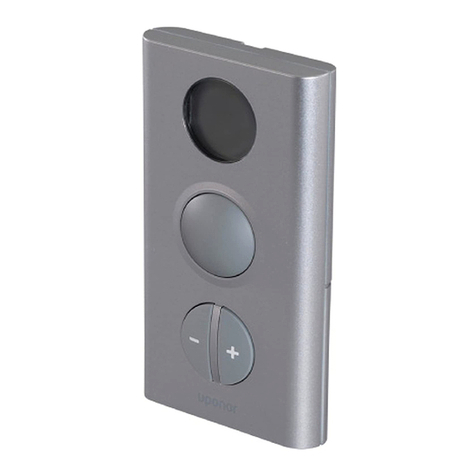
Uponor
Uponor Climate Control Zoning System User manual
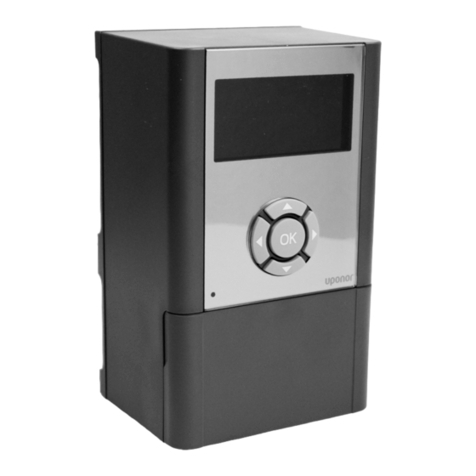
Uponor
Uponor C-46 User manual
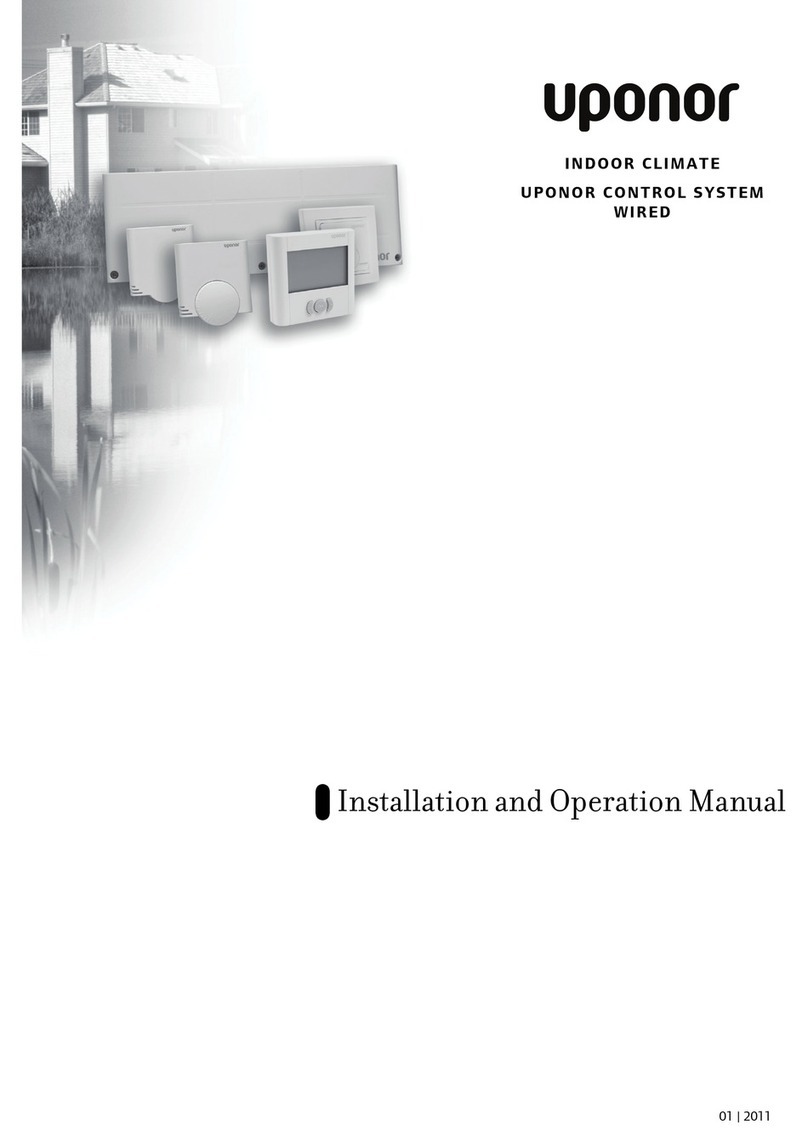
Uponor
Uponor UponorControl System User manual
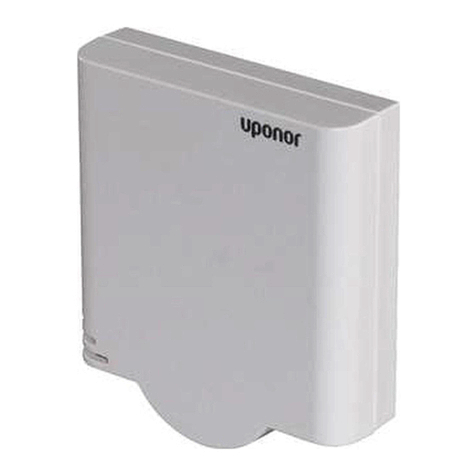
Uponor
Uponor C-33 User manual
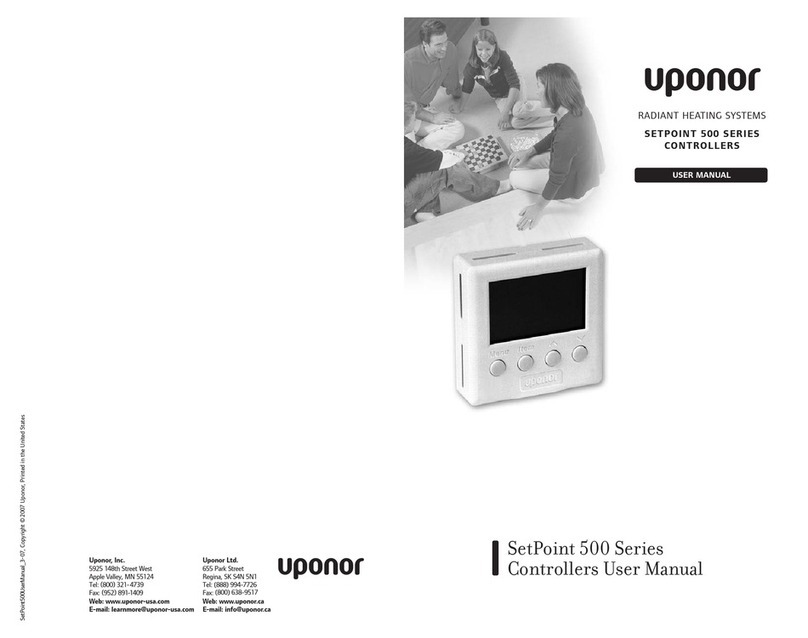
Uponor
Uponor SETPOINT 500 SERIES User manual
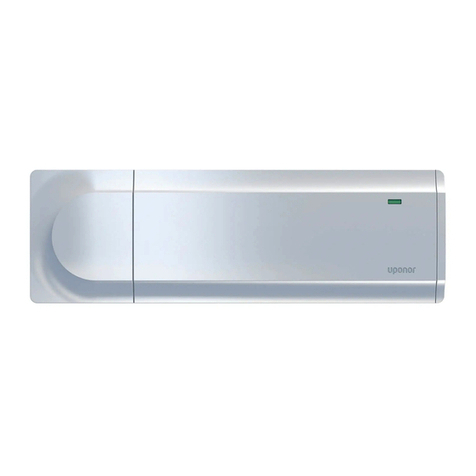
Uponor
Uponor Smatrix Base PULSE User manual
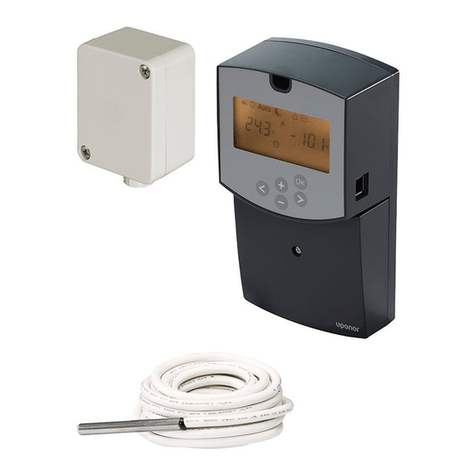
Uponor
Uponor Smatrix Move User manual
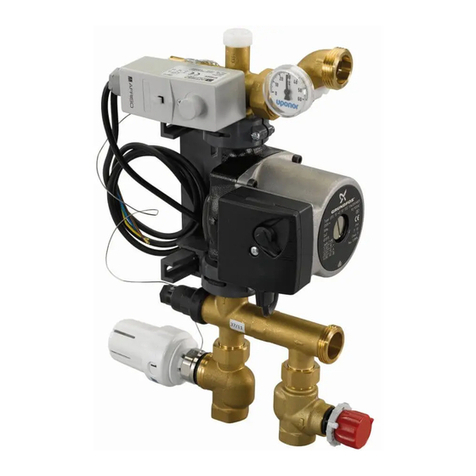
Uponor
Uponor KRS 6 User manual
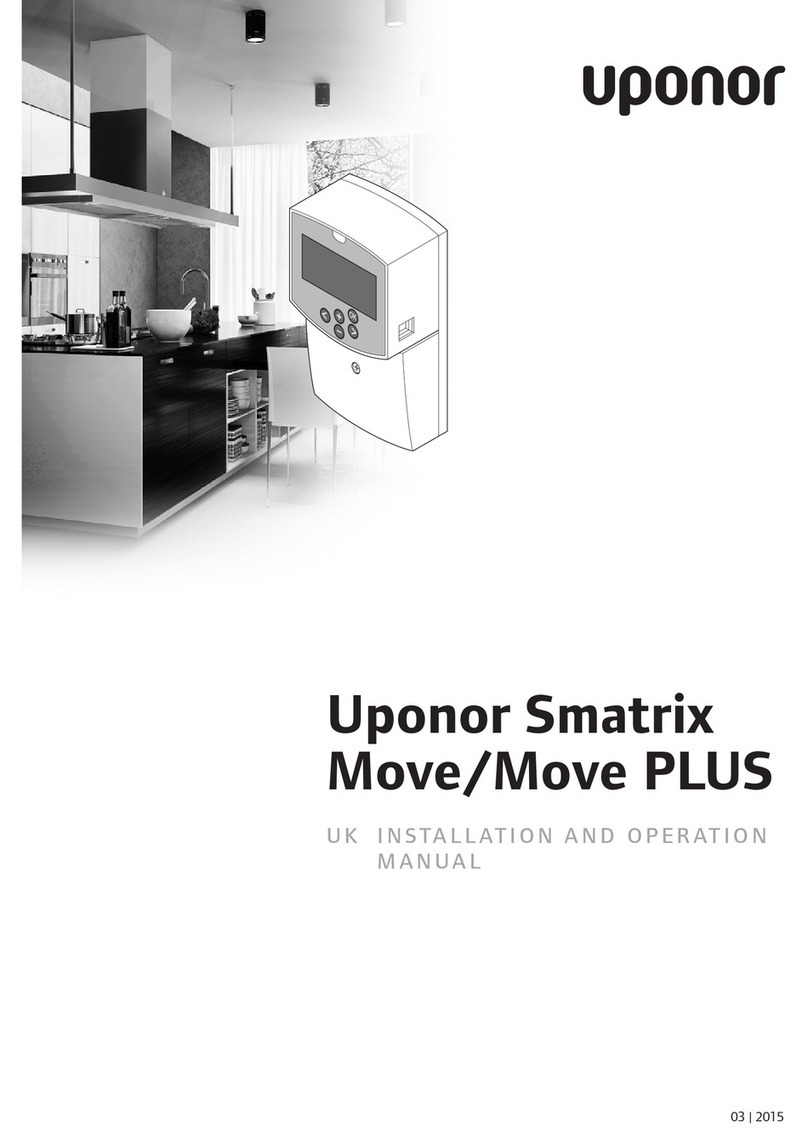
Uponor
Uponor SmatrixMove User manual
Popular Temperature Controllers manuals by other brands
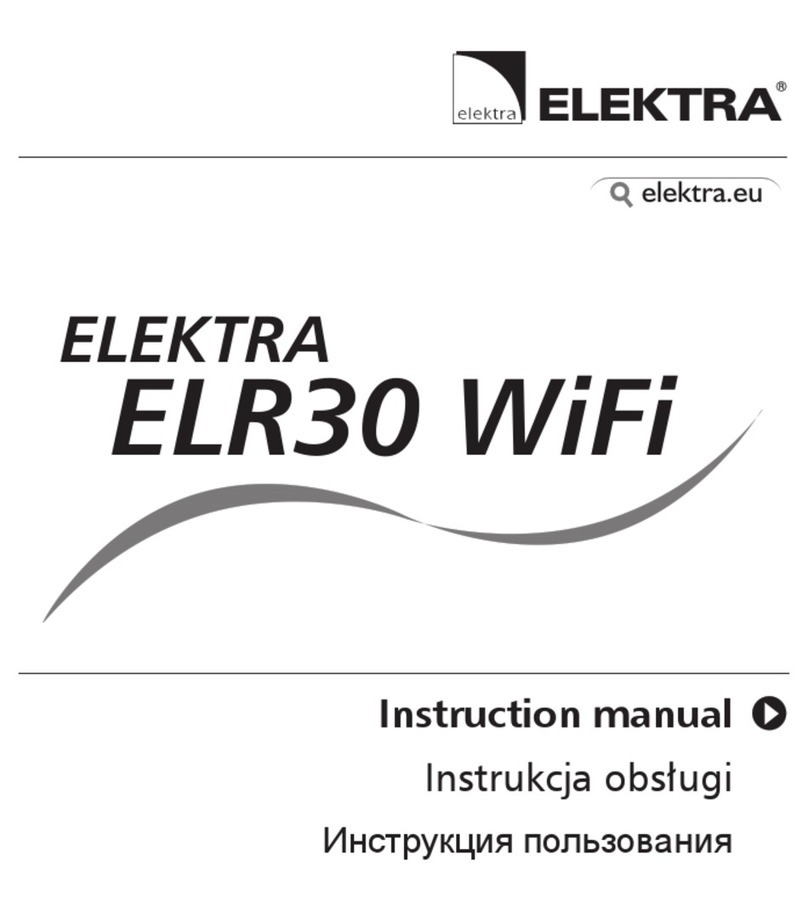
ELEKTRA
ELEKTRA ELR30 WiFi instruction manual

Jaga
Jaga CLIMA CANAL-JDPC user manual
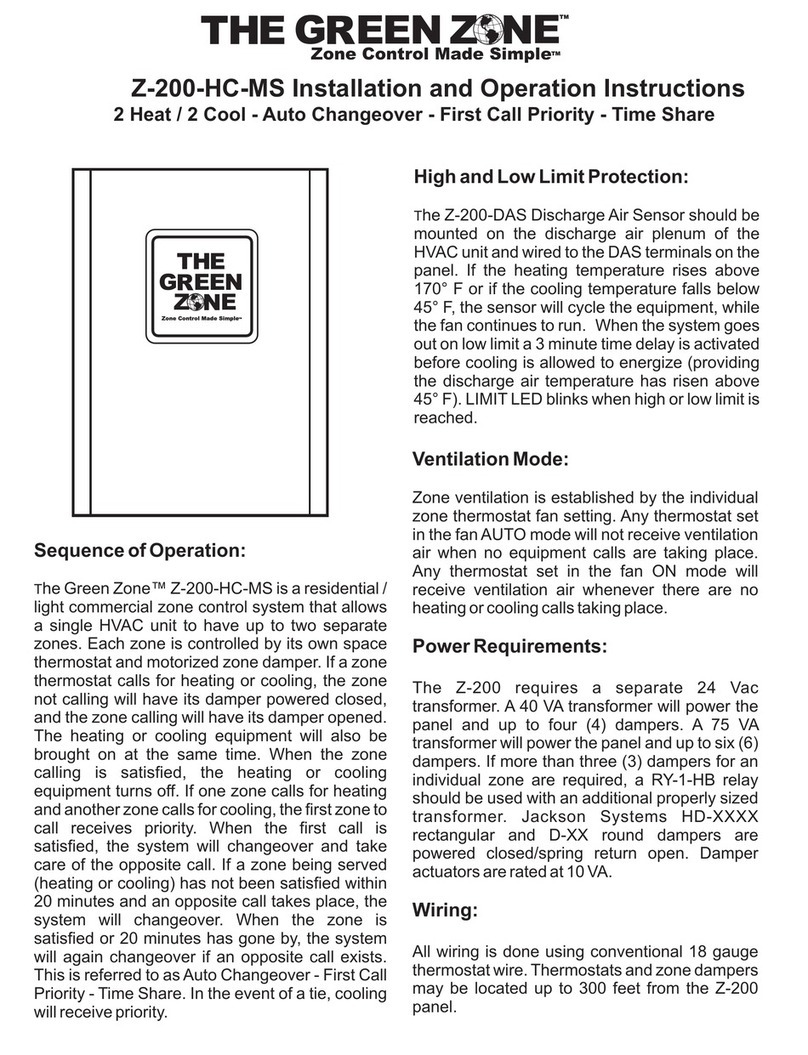
Jackson Systems
Jackson Systems THE GREEN ZONE Z-200-HC-MS Installation and operation instructions
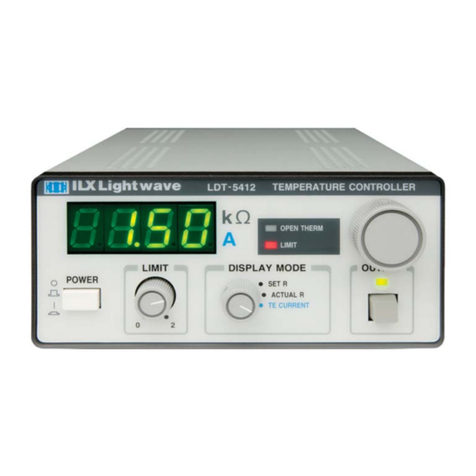
ILX Lightwave
ILX Lightwave LDT-5412 user guide
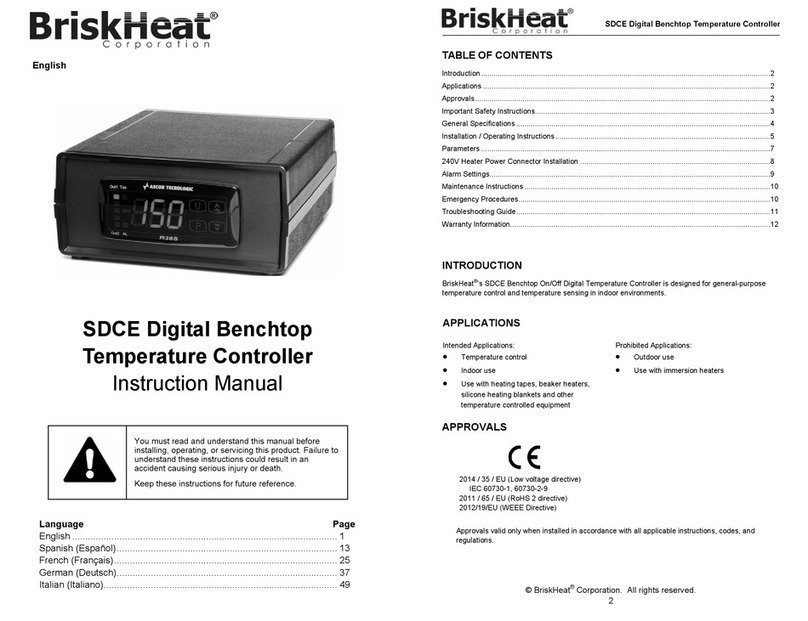
BriskHeat
BriskHeat SDCE instruction manual
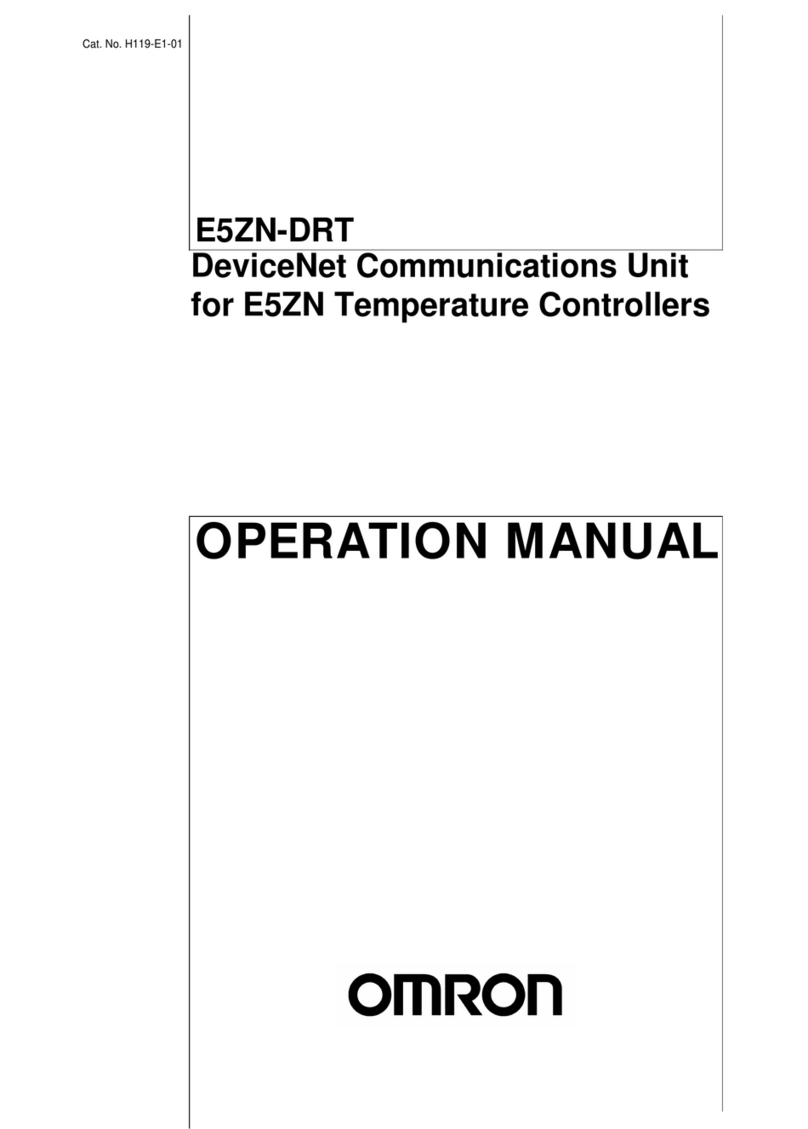
Omron
Omron E5ZN-DRT Operation manual
